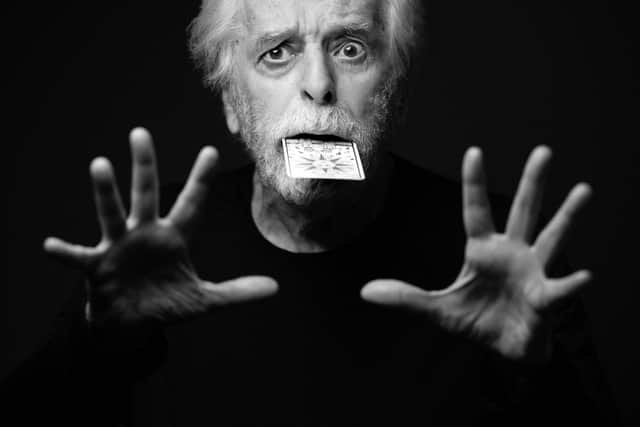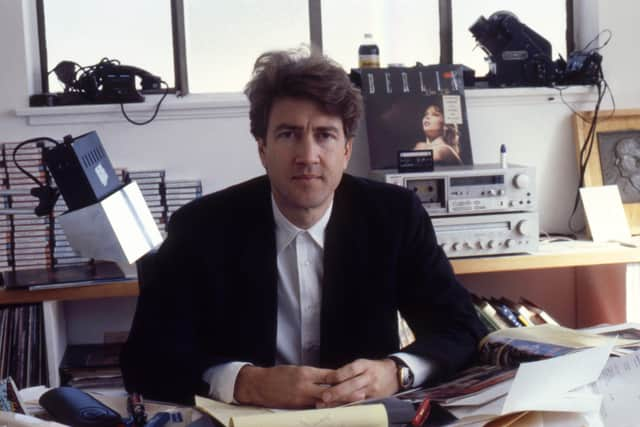Dune Part II | The first attempt to adapt Frank Herbert’s “Dune” with David Lynch and Alejandro Jodorowsky
and live on Freeview channel 276
The long-awaited “Dune: Part II” opens in cinemas across the United Kingdom this Friday, bringing back the cast of Timothee Chalamet and Zendaya alongside new faces Dave Bautista and a shaven-headed Austin Butler portraying antagonist Feyd-Rautha.
The first “Dune” film, released in 2021, was a critical and commercial hit, earning $434.8 million at the global box office and earning 83% on Rotten Tomatoes, certifying the Denis Villeneuve film “Fresh.” Plaudits were handed to the director not just for his skilful cinematography, but for the cast in particular breathing “new life” into their characters.
Advertisement
Hide AdAdvertisement
Hide AdYou’ll notice the phrase “new life” - well, for those who aren’t too familiar with the ill-fate of previous attempts to adapt Frank Herbert’s sci-fi masterpiece, there was a great amount of expectation regarding the 2021 film, after the problems that occurred when the original film, “Dune” shot in 1983 and it’s release in 1984.
That adaptation at one point had “The Holy Mountain” director Alejandro Jodorowsky developing the work, while after its first failed attempt, David Lynch took the directing reigns during an arduous filming process in Mexico, and an even more tumultuous editing process.
So what went wrong with the first attempt to bring “Dune” to the big screen?
Dune pre-production - Alejandro Jodorowsky’s vision (1971)


The production of Dune initially began with the optioning of the film rights to Frank Herbert's novel by film producer Arthur P. Jacobs in mid-1971. However, Jacobs passed away in mid-1973, leaving plans for the film in development. Subsequently, the rights were acquired by a French consortium led by Jean-Paul Gibon, with Alejandro Jodorowsky attached to direct.
Advertisement
Hide AdAdvertisement
Hide AdJodorowsky assembled a notable team of artists and musicians, including graphic artist Jean “Mœbius” Giraud who storyboarded the vision Jodorowsky had in mind. The project, which was initially envisioned as a 10–14 hour epic, faced challenges in securing adequate financing as its scope expanded. Additionally, there were disagreements among the creative team regarding the direction of the film
This marked the first attempt to bring Dune to the big screen, although it never progressed beyond pre-production. Enter Dino De Laurentiis.
David Lynch replaces Ridley Scott as director (1980)
After Alejandro Jodorowsky departed from the project, Italian producer Dino De Laurentiis acquired the rights to "Dune" in late 1976. De Laurentiis commissioned Frank Herbert to write a new screenplay in 1978. He then hired director Ridley Scott in 1979, with Rudy Wurlitzer writing the screenplay.
However, Ridley Scott eventually dropped out of the project, after working on three drafts of the script. He intended to split the book into two movies but ultimately decided to leave the project, citing personal reasons for his departure, specifically mentioning the unexpected death of his older brother Frank due to cancer, which deeply affected him. He informed Dino De Laurentiis that he was relinquishing the "Dune" script, as he felt it required much more time and commitment than he could dedicate at that moment.


Advertisement
Hide AdAdvertisement
Hide AdDavid Lynch joined the production of "Dune" around the early 1980s. He was chosen by producer Raffaella De Laurentiis after she watched Lynch's Academy Award nominated "The Elephant Man," released in 1980 and was impressed by his work. Despite initially not being familiar with Frank Herbert's novel, Lynch read "Dune" and, upon liking it, agreed to direct the film.
His unique artistic vision, demonstrated in "The Elephant Man," combined with his newfound appreciation for the source material, led to his selection as the director for the "Dune" adaptation, and it led him to work with future collaborator Kyle MacLachlan and British musician Sting during the filming.
Problems plague “Dune” production - and post-production (1983)
Filming "Dune" in Mexico presented various logistical challenges. These included difficulties with the country's infrastructure, such as failing electricity or communication lines, which disrupted the shooting schedule. Some cast and crew members experienced health-related issues during filming, possibly due to the demanding shooting conditions or environmental factors. These health issues further complicated the production process.
Despite the film's substantial budget, estimated to be over $40–42 million, financial constraints still impacted the production. This required careful management of resources and creative solutions to maximize the film's production value.
Advertisement
Hide AdAdvertisement
Hide AdAfter completing principal photography, the initial rough cut of "Dune" exceeded four hours in duration. This extended length far surpassed the typical runtime expected for a commercial release, posing a significant challenge for editing and finalizing the film.
The straw that broke the camel’s back for Lynch though would come while editing "Dune"; the process required meticulous attention to detail to streamline the narrative, condense scenes, and ensure coherence while preserving Lynch's artistic vision. This process involved making difficult decisions about which scenes to retain, revise, or remove to create a cohesive final product.
While David Lynch envisioned a longer, more comprehensive adaptation of Frank Herbert's novel, the studio and financiers preferred a shorter, more commercially viable version. This disparity in expectations led to creative tensions and compromises during the editing process. Lynch and the producers had differing visions for the final cut of the film. Lynch's artistic sensibilities clashed with the commercial considerations of the studio, resulting in compromises and alterations to the film's content and structure.
Negative reaction as Lynch eschews Hollywood studios (1984)
When "Dune" was finally released, the reactions from both critics and audiences were largely negative. Critics criticized the film for its confusing plot, uneven pacing, and visual effects. It also didn’t help that despite its substantial budget, estimated to be over $40-45 million, the film struggled to recoup its production costs earning back $37.9 million according to some reports.
Advertisement
Hide AdAdvertisement
Hide AdRoger Ebert famously gave the film one star out of four, describing it as "an incomprehensible, ugly, unstructured, pointless excursion" and "the worst movie of the year." Other critics echoed similar sentiments, highlighting the film's shortcomings and its failure to live up to the expectations set by Frank Herbert's novel.
Audiences also expressed disappointment with the film, citing its lack of coherence and its failure to capture the essence of the source material. Many viewers found the film difficult to follow, and some criticized the pacing and editing choices, owing to the “compromise” between Lynch and producers.
David Lynch's take on the finished product of "Dune" was somewhat mixed. While he acknowledged the film's shortcomings and the challenges he faced during its production, he also expressed a degree of satisfaction with certain aspects. Lynch admitted that he may have compromised his artistic vision due to external pressures, particularly from the producers, but he still found value in the creative process.
In recent years, Lynch has been known to negotiate for greater creative autonomy, especially given his reputation as an auteur filmmaker. His involvement in projects often comes with an expectation of having significant input into the editing process.
Where can I watch David Lynch’s “Dune” on streaming services?
The 1984 version of “Dune” can be streamed on Mubi, STARZ and Lionsgate+ (subscription required)
Comment Guidelines
National World encourages reader discussion on our stories. User feedback, insights and back-and-forth exchanges add a rich layer of context to reporting. Please review our Community Guidelines before commenting.
